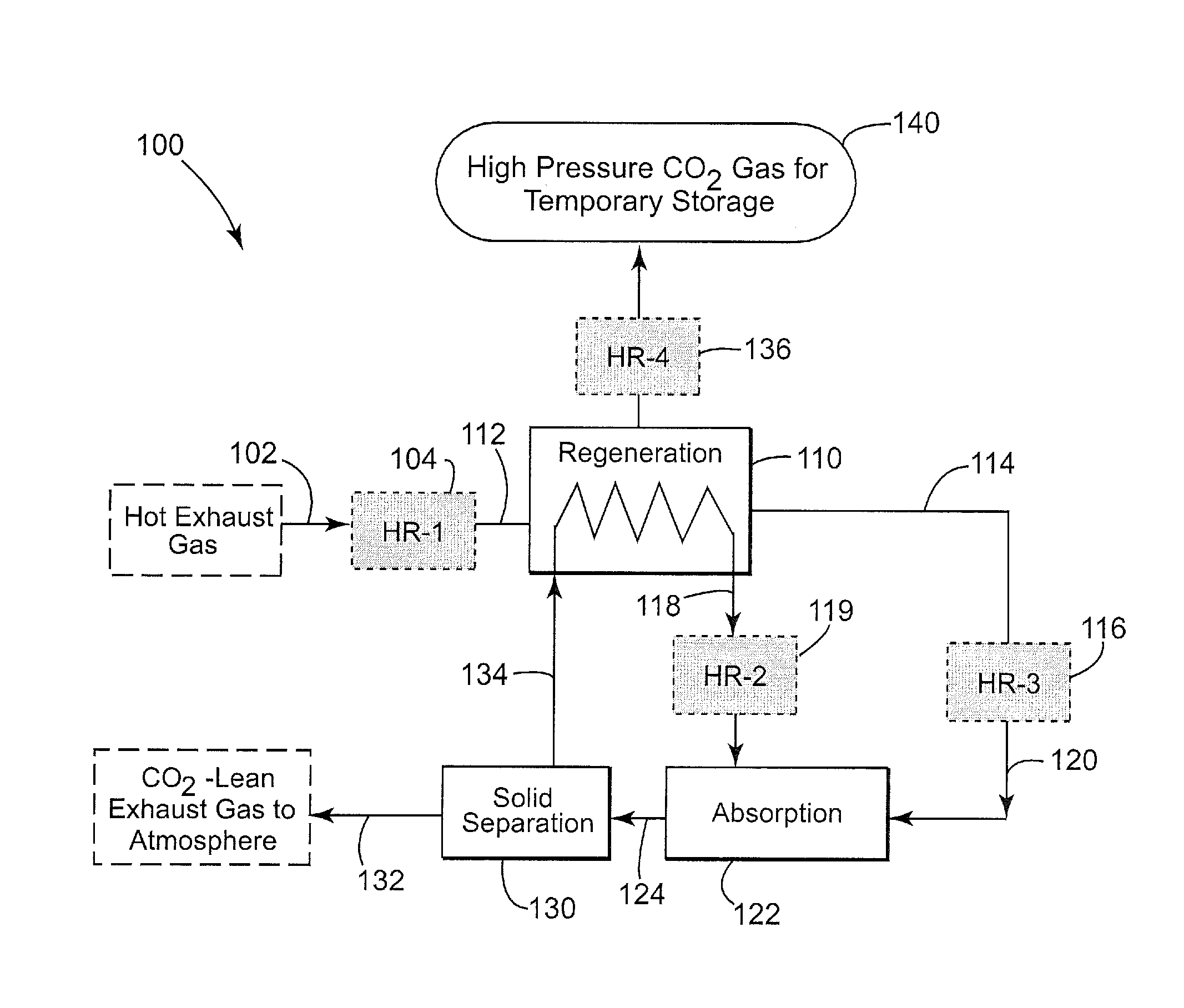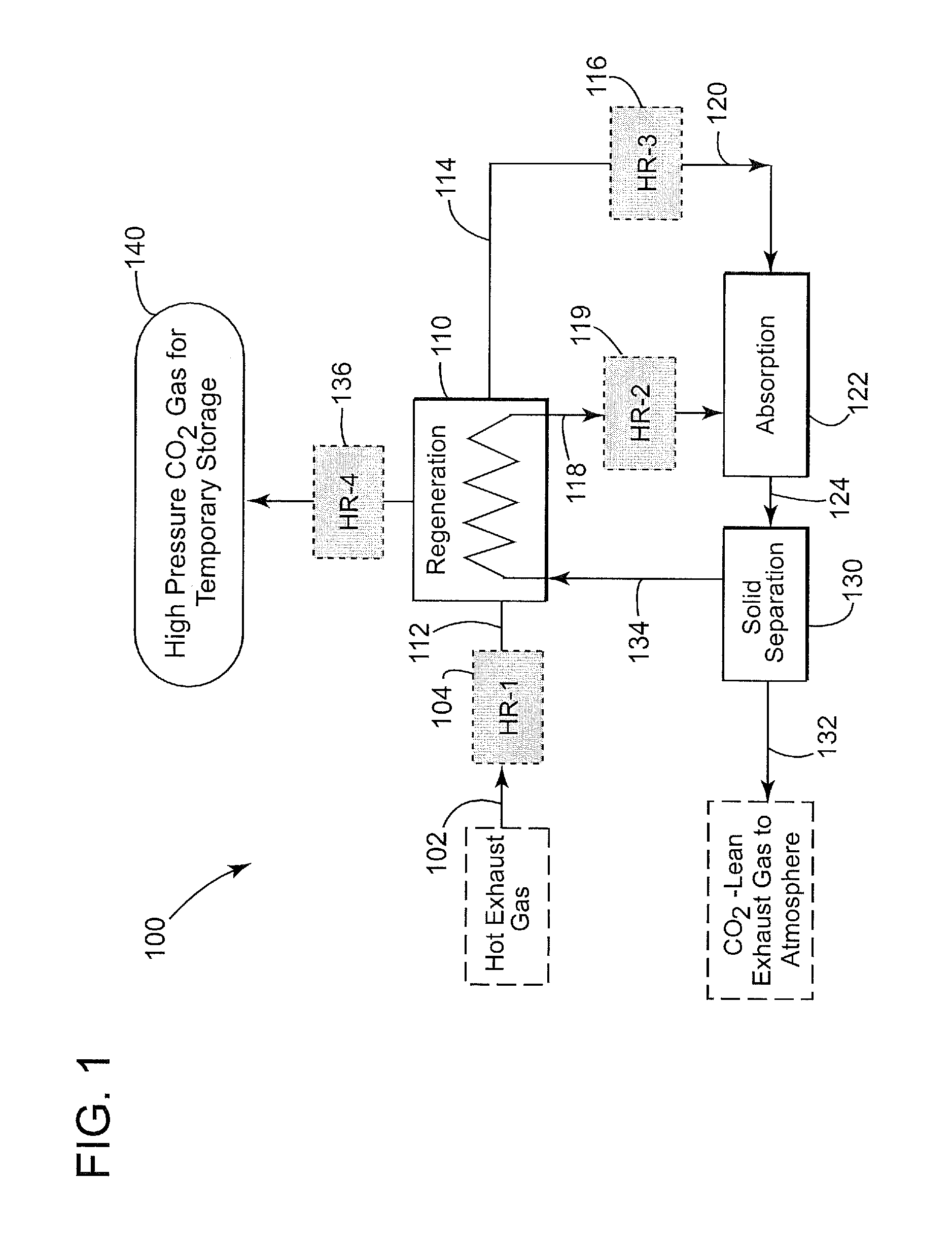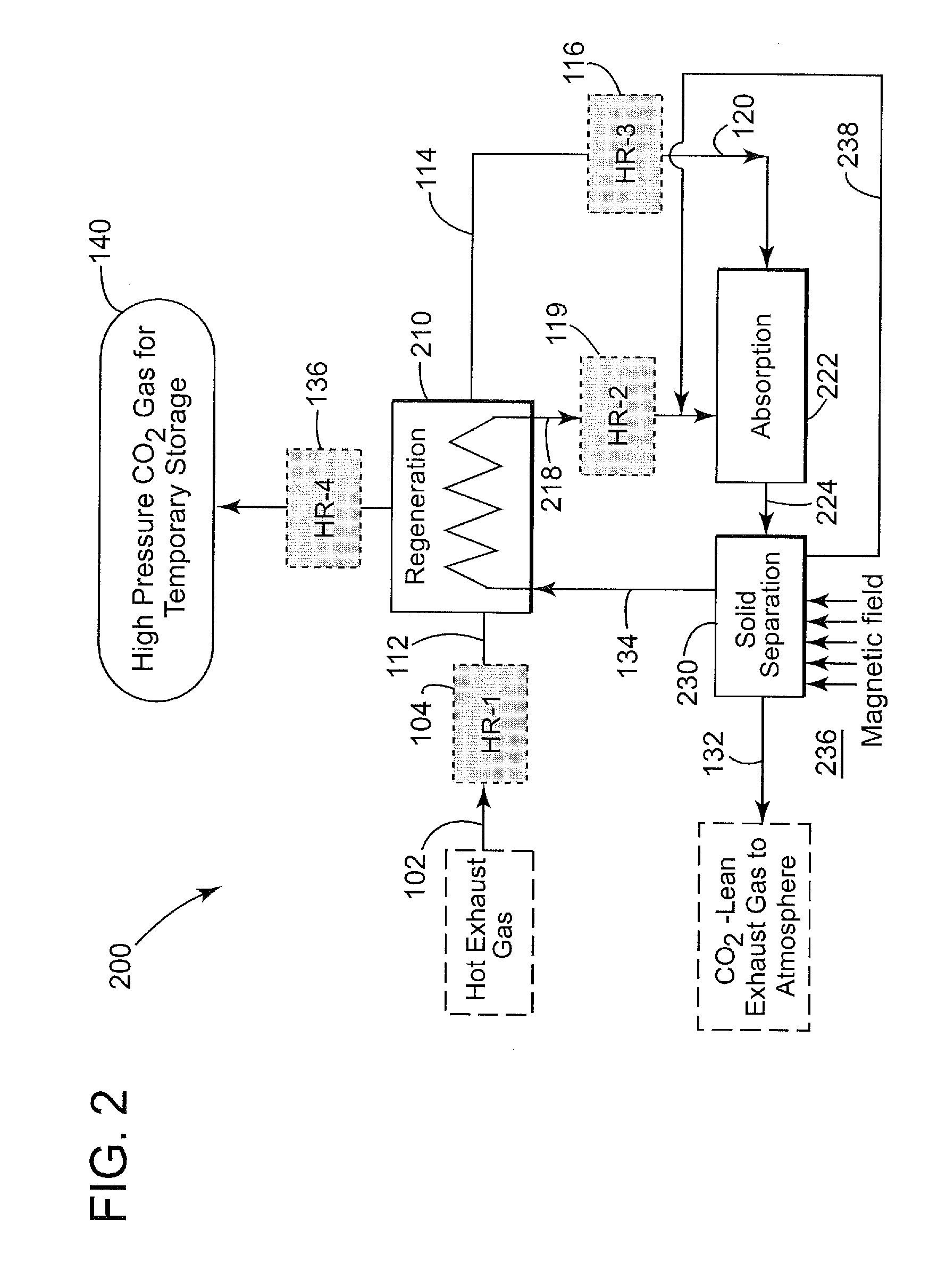Process and system employing phase-changing absorbents and magnetically responsive sorbent particles for on-board recovery of carbon dioxide from mobile sources
a technology of phase-changing absorbents and magnetically responsive sorbent particles, applied in the direction of separation processes, machines/engines, mechanical equipment, etc., can solve the problems of space and weight limitations, lack of any economies of scale, and more difficult if attempted, so as to reduce co2 emissions, maximize the electrical energy generating value of fuel, and reduce the effect of waste heat at high to moderate temperatur
- Summary
- Abstract
- Description
- Claims
- Application Information
AI Technical Summary
Benefits of technology
Problems solved by technology
Method used
Image
Examples
Embodiment Construction
[0079]The invention will be further described in more detail with reference to FIG. 1 which illustrates an embodiment of a system and apparatus 100 for the practice of a CO2 absorption process which uses a chemical phase-changing sorbent. System 100 includes a regeneration zone 110, a chemical absorption / adsorption zone 122, a solid separation unit 130 and several heat recovery (HR) units as described in more detail below. In this description, it will be understood that each of the zones identified can contain one or more corresponding unit operations with one or more known pieces of apparatus which accomplish the functions and steps in the practice of the process of the invention.
[0080]Chemical sorbents such as liquid di-amines and other liquids functionalized with amine groups that form a reversible chemical bond with CO2 as described above can be used in the process of the invention. An example of a suitable chemical sorbent is liquid GAP-0 carbamate which reversibly reacts with ...
PUM
| Property | Measurement | Unit |
|---|---|---|
| temperatures | aaaaa | aaaaa |
| temperatures | aaaaa | aaaaa |
| temperatures | aaaaa | aaaaa |
Abstract
Description
Claims
Application Information
 Login to View More
Login to View More - R&D
- Intellectual Property
- Life Sciences
- Materials
- Tech Scout
- Unparalleled Data Quality
- Higher Quality Content
- 60% Fewer Hallucinations
Browse by: Latest US Patents, China's latest patents, Technical Efficacy Thesaurus, Application Domain, Technology Topic, Popular Technical Reports.
© 2025 PatSnap. All rights reserved.Legal|Privacy policy|Modern Slavery Act Transparency Statement|Sitemap|About US| Contact US: help@patsnap.com



